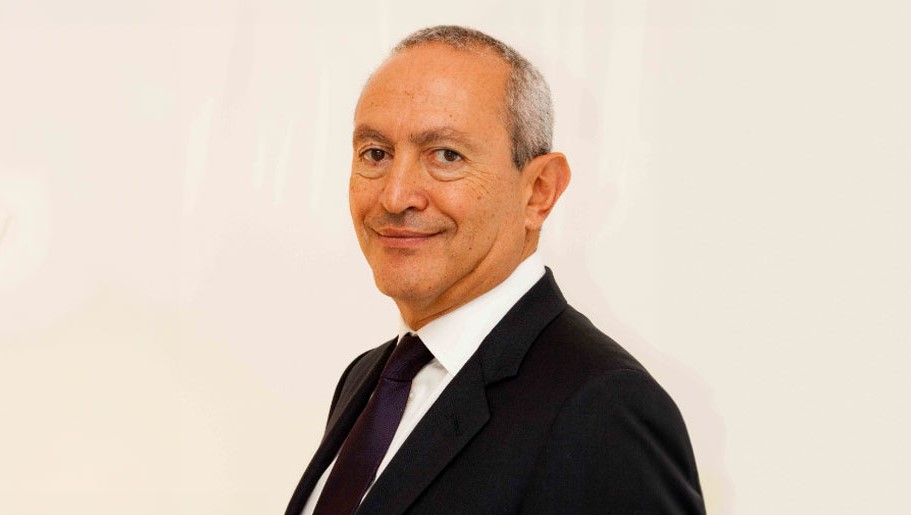Egyptian billionaire Nassef Sawiris, one of the Middle East’s most prominent industrialists, is embarking on a transformative chapter in his global business strategy. He has announced plans to invest up to $50 billion in U.S. infrastructure projects, marking one of the largest private-sector commitments in recent years. Sawiris, widely recognized for his leadership of OCI Global and Orascom Construction, is restructuring these entities to create a unified platform that combines financial strength, operational expertise, and construction capability.
This strategic pivot underscores Sawiris’ ambition to expand beyond the Middle East and Africa, tapping into the United States a market with high demand for digital, energy, and social infrastructure. It reflects a vision to position his companies as global infrastructure champions, capable of delivering large-scale, high-complexity projects with speed, quality, and operational excellence.
Reorganizing for Global Impact
The merger of OCI Global and Orascom Construction is central to Sawiris’ plan. OCI Global, a major investment and industrial platform, will combine with Orascom Construction, which brings decades of engineering and project execution experience. The newly formed entity is expected to be listed on the Abu Dhabi Securities Exchange (ADX), highlighting Sawiris’ strategic pivot toward Abu Dhabi as a global hub for infrastructure investment.
This merger not only consolidates expertise and capital but also creates greater scalability, operational efficiency, and competitive positioning. The combined entity will be capable of bidding on complex projects requiring both investment capital and hands-on construction experience a capability that differentiates Sawiris’ platform from traditional infrastructure funds.
Strategic Focus on U.S. Infrastructure
Sawiris has earmarked $50 billion for strategic investment in U.S. infrastructure, targeting areas experiencing rapid growth and modernization needs. The investment strategy emphasizes digital infrastructure, energy systems, and social projects, reflecting both market demand and policy incentives. Data centers will play a critical role as the backbone of cloud computing, AI, and other technology-driven services. In parallel, energy infrastructure will focus on integrating renewable solutions like solar and wind while modernizing existing grids to improve efficiency and reliability.
Social infrastructure, including airport terminals, university campuses, and urban housing, represents another significant focus. Sawiris’ expertise in large-scale construction across Africa and the Middle East positions him well to meet the logistical, regulatory, and design challenges of these projects. By addressing growing demand in these sectors, Sawiris aims to contribute to both commercial and public development needs while tapping into long-term revenue streams.
Expanding into Complementary Sectors
Beyond the core sectors, Sawiris’ platform is exploring transportation logistics, industrial parks, and technology-enabled smart city developments. The U.S. government’s infrastructure initiatives, such as the Infrastructure Investment and Jobs Act, provide a fertile environment for private investment, including public-private partnerships, tax incentives, and grants. By aligning his strategy with these initiatives, Sawiris can create high-impact projects that combine economic returns with societal benefits.
His focus is not only on physical infrastructure but also on creating a digital and sustainable ecosystem. Investments in smart grids, high-tech campuses, and integrated data and energy systems reflect an understanding that future infrastructure will be increasingly connected, automated, and energy-efficient. This forward-looking approach positions Sawiris’ platform to benefit from both government incentives and the growing demand for technology-enabled infrastructure.
Strategic Rationale
Sawiris’ approach is rooted in combining capital strength with operational expertise. By merging OCI Global and Orascom, he creates a vertically integrated platform capable of executing projects end-to-end. This integration allows the company to manage complex logistics, reduce costs, and optimize timelines in ways that pure investment funds or traditional construction firms cannot.
Diversification into the U.S. market also reduces geopolitical risk, allowing Sawiris to balance his portfolio across stable and high-growth economies. The U.S. infrastructure sector, particularly in digital and renewable energy, offers long-term opportunities that align with global trends toward technology adoption and decarbonization.
The strategy is further enhanced by Sawiris’ ability to integrate construction and investment, giving him control over both execution and capital deployment. This synergy allows for higher-quality outcomes, operational flexibility, and better management of risks, setting the platform apart from competitors that rely solely on capital allocation.
Challenges and Considerations
Despite the vast opportunities, several challenges remain. The regulatory environment in the U.S. is complex, with zoning laws, environmental assessments, and permitting requirements potentially slowing project execution. Successfully navigating these regulations will be critical to project timelines and financial performance.
Competition is another key factor. The U.S. infrastructure market is home to major players such as Bechtel, Fluor, and Kiewit, all of which have deep local knowledge and established client relationships. Sawiris’ companies must differentiate themselves through speed, efficiency, innovation, and the ability to deliver integrated infrastructure solutions.
Political and economic factors, including trade policies, taxation changes, and regional regulations, also create potential risks. Mitigating these risks will require strategic partnerships, flexible capital deployment, and a careful understanding of local market conditions.
Looking Ahead
The progress of the OCI Global and Orascom merger, along with the initial deployment of capital into key U.S. projects, will be crucial indicators of success. Early investments in data centers, renewable energy, and airport infrastructure will demonstrate the platform’s capability and set the stage for larger, long-term projects.
Engagement with U.S. federal and state governments, as well as partnerships with local developers and technology firms, will enhance execution capacity and open doors to additional opportunities. Sawiris’ forward-looking approach positions his platform to capitalize not only on immediate infrastructure needs but also on future trends such as smart cities, digital connectivity, and sustainable urban development.
Global Significance
If successfully executed, Sawiris’ $50 billion investment could reshape segments of U.S. infrastructure. For Sawiris, it solidifies his reputation as a global infrastructure leader. For the U.S., it brings foreign capital with operational capability, accelerating digital, energy, and social infrastructure development. For investors, the merged entity represents a rare opportunity to participate in large-scale, high-impact infrastructure projects driven by operationally integrated capital.
Nassef Sawiris’ bold $50 billion U.S. infrastructure initiative combines financial strength, construction expertise, and long-term strategic vision. By investing in data centers, energy, and social infrastructure, he is positioning his companies at the forefront of America’s modernization efforts. The initiative underscores the rising influence of Middle Eastern capital in global infrastructure and highlights a blueprint for sustainable, technology-driven, and integrated infrastructure investment.



